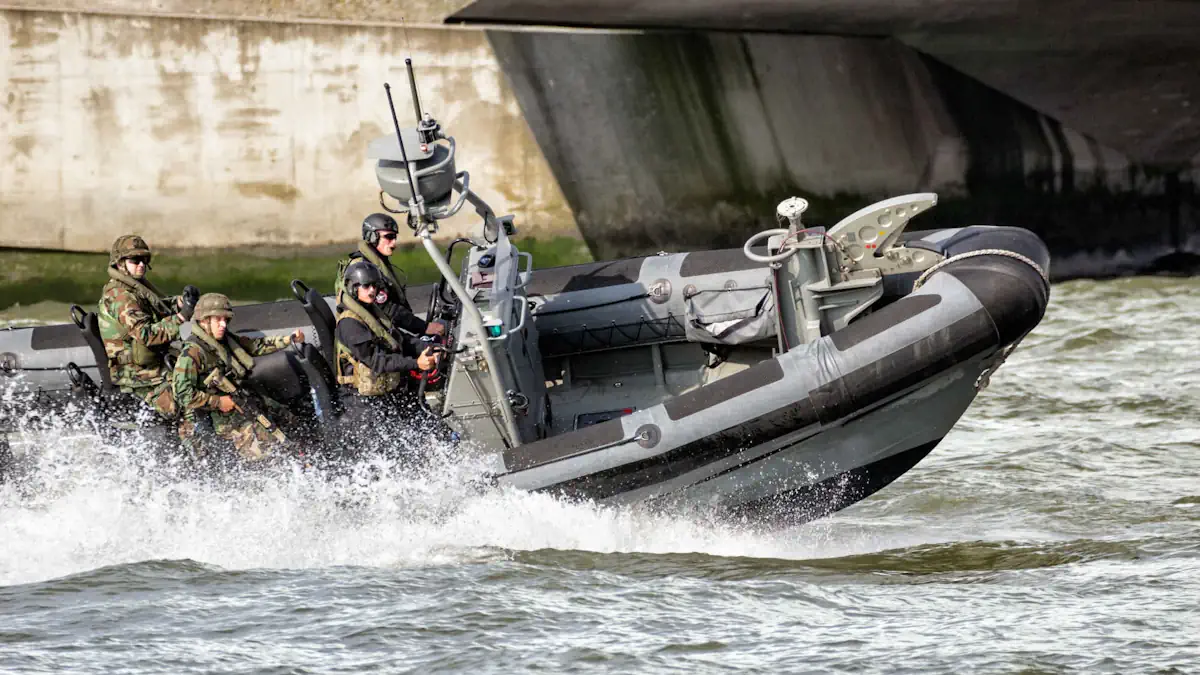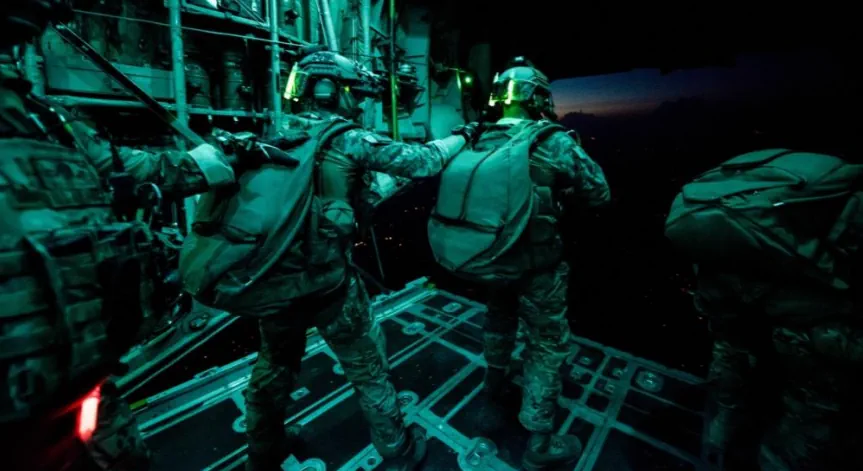The 2018 National Defense Strategy (NDS) marked a dramatic shift in the defense priorities of the United States. The strategy said, “Inter-state strategic competition, not terrorism, is now the primary concern in US national security,” meaning that powers such as China and Russia would now be the focus of DOD rather than nonstate terrorist groups.
Against this backdrop, Dr. Jonathan Schroden testified before the Senate Armed Services Committee, Subcommittee on Emerging Threats, and Capabilities, on May 17, 2023. The title of the hearing was “The Implications of Competition Campaigning for US Special Operations Forces.” The focus of Schroden’s testimony was on how special operations forces (SOF) can contribute to interstate strategic competition and what obstacles stand in their way.
How Special Operations Forces Can Contribute to Strategic Competition
Schroden’s testimony highlighted a variety of areas where special ops forces can contribute to competition, including “intelligence operations, information sharing, foreign internal defense, security cooperation, proxy and surrogate operations, and information operations.” Schroden went on to point out that the special operators have played a large role in these areas during past eras of interstate competition, including the Cold War. Additionally, special operators are developing new capabilities that can be used for the competition, including foreign internal defense, security force assistance, and counterthreat finance, as well as electromagnetic warfare and information, cyber, and space operations. Indeed, Schroden pointed out that the US Special Operations Command (SOCOM) can “turn the crank of force design, force development, and force employment faster than any other part of DOD, which should lend it an inherent advantage in generating innovative capabilities and force packages designed for competition today and in the future.” However, several challenges prevent the command from fully utilizing these advantages.
The testimony highlighted one overarching problem: policy-makers have not clearly articulated the goals for and desired effects of competition; therefore, organizations such as SOCOM must identify problems that they are uniquely suited to solve in a competitive setting. Ideas have included “serving as key sensors for the Joint All-Domain Command and Control concept, conducting operational preparation of the environment and information operations, ensuring cross-domain and transregional integration, or imposing costs in other theaters as part of a protracted conflagration or ‘horizontal escalation’ with competitors like China or Russia.” However, these ideas have not been refined into executable campaigns to be approved by policy-makers.
Cultural Adjustments from the Counterterrorism Era
During the Global War on Terror, special operations forces enjoyed massive intelligence and operational advantages over their nonstate adversaries. Because of this, current operations have been prioritized over longer-term efforts such as strategic planning and force design and development. As Schroden pointed out,
Anyone familiar with SOCOM headquarters can, for example, appreciate the dominant size and stature that the operations directorate (J3) has over the plans directorate (J5). For SOCOM to reap the advantages of its unique blend of authorities for integrating the operational and institutional components of competition campaigns, it will need to reinvigorate and invest in the people, processes, and priority of its J5 relative to other staff sections.
Schroden also referenced the SOCOM Comprehensive Review, which found that the command tended to place operational deployments over health-of-the-force priorities—thereby risking the burn-out of the force. To address this risk, the command needs a longer-term, more balanced view of deployment cycles and operational tempo and a shift in culture to prioritize these aspects of force management.
The shift in focus from counterterrorism to strategic competition also means that SOCOM’s role is changing. While it was previously supported by the joint force, it will now have the role of supporting the joint force. This shift will require the command to spend some of its funding on capabilities designed to provide this support, rather than exclusively covering its own needs. Again, this will require a shift in culture for a force, which will take time and sustained attention to address. As Schroden pointed out, “As might be expected, these ideas have not yet been widely accepted across SOF formations, even though they have been articulated in SOCOM’s vision and strategy for over a year.”
Structural Challenges Within Special Operations Command
The SOF enterprise has several structural and process issues that must be overcome for special operators to be fully utilized in a competitive environment. First is a lack of fully effective civilian oversight. Schroden pointed out that there is an imbalance between the Assistant Secretary of Defense for Special Operations and Low Intensity Conflict and SOCOM, saying, “Such oversight is achievable in the current arrangement only if the Secretary of Defense demands it or if the SOCOM commander allows it—hardly the foundation on which such oversight is supposed to reside.”
Another structural challenge is determining what role the SOCOM commander should play in shaping the future of SOF—that is, whether the commander acts as a director of force design or acts as a force integrator, deferring more to the support needs of their parent services in the joint force. Schroden pointed out that while the latter would make it easier for SOCOM to expediate its transition to a support force, the commander will likely want to play a more directive role. He went on to say that “being more than a force integrator will require SOCOM to do more than issue another SOF Operating Concept; rather, the command will need to immediately rebalance its headquarters, quickly develop a substantive and tangible vision for integrated future SOF formations, and engage in a virtuous cycle of force design, analysis, and experimentation that can leapfrog its components’ efforts.”
Conclusion
In his closing remarks, Schroden called the 2018 National Defense Strategy an “inflection point similar to the immediate aftermath of the 9/11 attacks.” He said, “At that time, there was a strong impetus to get after the problem of terrorism, but with minimal strategic guidance…. Today, the special operations enterprise—and DOD more broadly—once again needs to translate ideas such as strategic competition and campaigning into tactical actions via a clear framework of activities and associated authorities, policies, permissions, and oversight.” Schroden went on to point out that it took at least half a decade for SOF to become the world’s premier counterterrorism force and that while it remains to be seen how long it will take for them to become a premier force in strategic competition, “the gauntlet for them to do so has been thrown.”


